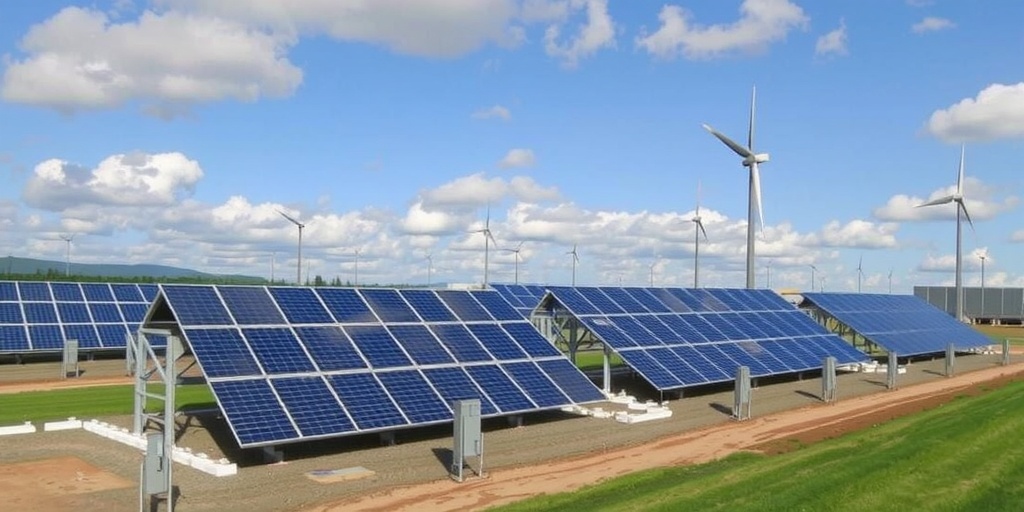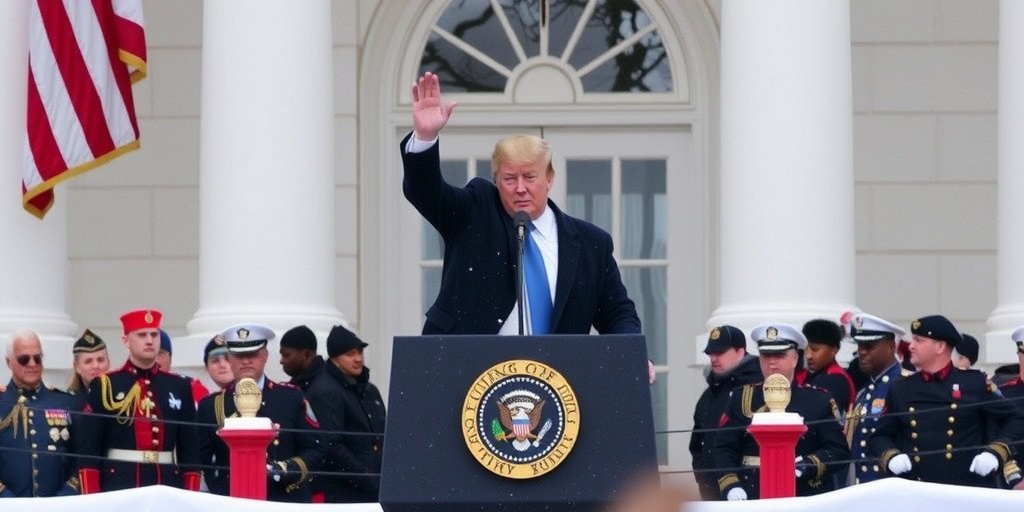Now Reading: Clean Energy’s Manufacturing Boost at Risk Amid Investment Concerns
-
01
Clean Energy’s Manufacturing Boost at Risk Amid Investment Concerns
Clean Energy’s Manufacturing Boost at Risk Amid Investment Concerns

American Manufacturing Shows Signs of Rebound Amid Uncertainty
American manufacturing has faced numerous challenges in recent years, including high borrowing costs and the strength of the dollar, which diminishes the competitiveness of U.S. exports. However, there is a glimmer of hope on the horizon, as increasing investments in factory construction suggest that a potential resurgence in production and employment might be imminent.
The surge of investments has mainly been driven by two significant categories of subsidies established under the Biden administration. The first category includes incentives aimed at constructing massive semiconductor plants, which are expected to become operational in the coming years. The second category has been pivotal in boosting the production of equipment necessary for the deployment of renewable energy technologies.
Nevertheless, the future of these investments is in jeopardy. The Trump administration, alongside a Republican-led Congress, is planning to roll back support for low-carbon energy initiatives, including battery-powered vehicles, solar power, and wind energy projects. One potential method to finance these proposed tax cuts involves shortening credits for renewable power generation, which raises significant concerns among industry stakeholders.
“If the timeline for these credits is shortened, the incentives for establishing domestic manufacturing facilities will likely decrease significantly,” explained Jeffrey Davis, a renewable energy incentives lawyer at White & Case. He noted that the projected sales and revenues over a reduced timeline may not justify the investment required for these facilities, leading companies to reconsider their manufacturing decisions.
The Biden administration’s strategy for revitalizing manufacturing relied heavily on a dual approach: stimulating supply through tax breaks, loans, and direct grants, while simultaneously boosting demand through rebates and tax credits aimed at consumers. Manufacturers contemplating investments took both supply and demand into account while planning to build or expand their facilities.
Over the past two years, private investment in clean energy manufacturing reached approximately $89 billion, according to the Rhodium Group, an economic research firm. Auto manufacturers are reshaping production lines for electric vehicles and forging partnerships to produce batteries, signaling a substantial shift in the industry. Despite some facilities beginning operations and others under construction, many remain in the planning phase, leaving companies deliberating on how to proceed amid shifting political winds in Washington.
The uncertainty stemming from political conditions raises critical questions for automakers about whether there is sufficient market demand to justify continued investments. Harrison Godfrey, head of federal investment and manufacturing at Advanced Energy United, emphasized that the industry must assess if the demand in the market can sustain their investment plans.
For several segments within the renewable energy supply chain, the economic viability of projects had already faced challenges prior to the November elections. The prospect of a Trump administration pushing forward with policies aimed at dismantling current renewable energy strategies could exacerbate these challenges.
The tumultuous political landscape has affected critical projects, including hydrogen production initiatives. Nel, a Norwegian company that manufactures electrolyzers for hydrogen production, initially aimed to establish a manufacturing facility in Michigan, optimistic that the Inflation Reduction Act would stimulate sufficient demand. However, inconsistent regulations regarding tax credits for hydrogen producers delayed their plans, leading to increased uncertainty about the future of such investments.
Moreover, Ford Motor Company’s aggressive investment plans in battery plants might face severe consequences if the Trump administration retracts subsidies for electric vehicles. The ripple effect of uncertainty extends along the entire supply chain, with major components and parts manufacturers reevaluating their commitments to expanding production.
The wind energy sector has been particularly impacted, with the Trump administration halting permits for both onshore and offshore wind development. This political move led to the cancellation of significant projects, including plans from an Italian manufacturer to construct a facility specializing in undersea cables for offshore wind turbines.
Even as some manufacturers waver, there are still pockets of optimism. Companies involved in mining and processing critical minerals necessary for battery production express confidence due to positive signals from the current administration. Potential tariffs on imports of these minerals could favor domestic producers as the government opens pathways for mining initiatives.
Despite the uncertainties posed by potential changes in policy, Jigar Shah, former head of the Loan Programs Office at the Energy Department, remains hopeful about the manufacturing landscape. He estimates that over half of the new manufacturing facilities his office supported are currently under construction. The fundamental demand for clean energy solutions appears resilient, suggesting that the industry may weather the political storms ahead.
In summary, while American manufacturing is experiencing a revival driven by substantial investments in clean energy and semiconductor production, the ongoing political climate raises crucial questions about the future of these initiatives. The next few months will be critical in determining whether these investments can progress or if the industry faces setbacks that could stymie growth and innovation in the sector.
Stay Informed With the Latest & Most Important News
Previous Post
Next Post
-
 01New technology breakthrough has everyone talking right now
01New technology breakthrough has everyone talking right now -
 02Unbelievable life hack everyone needs to try today
02Unbelievable life hack everyone needs to try today -
 03Fascinating discovery found buried deep beneath the ocean
03Fascinating discovery found buried deep beneath the ocean -
 04Man invents genius device that solves everyday problems
04Man invents genius device that solves everyday problems -
 05Shocking discovery that changes what we know forever
05Shocking discovery that changes what we know forever -
 06Internet goes wild over celebrity’s unexpected fashion choice
06Internet goes wild over celebrity’s unexpected fashion choice -
 07Rare animal sighting stuns scientists and wildlife lovers
07Rare animal sighting stuns scientists and wildlife lovers




















